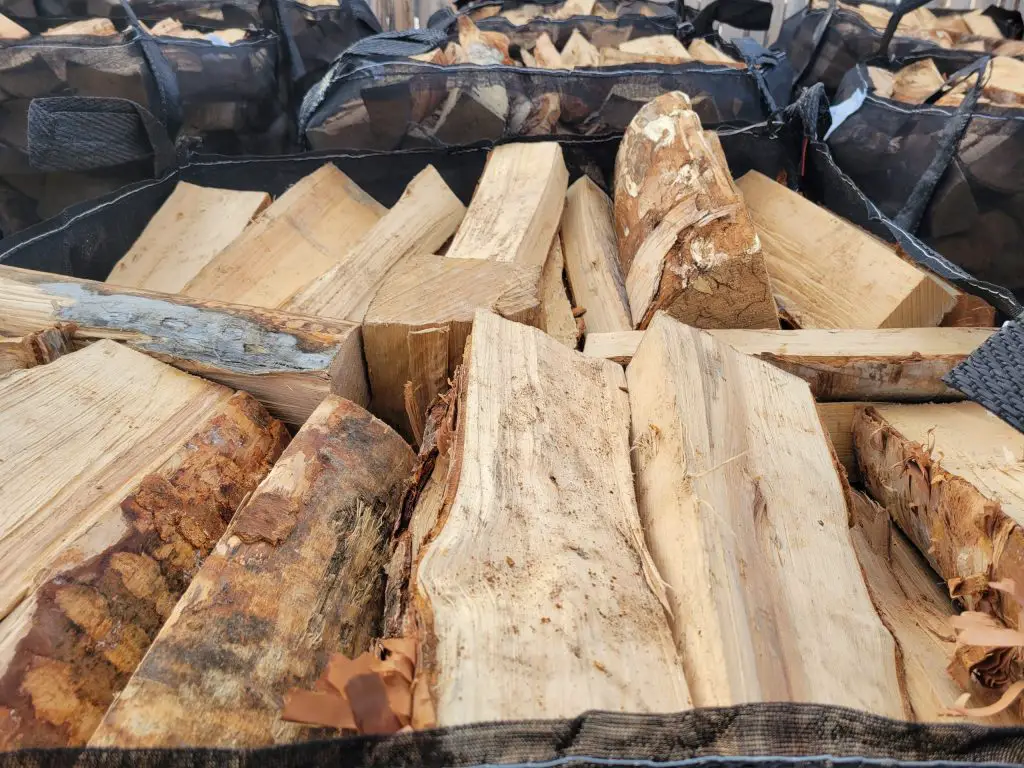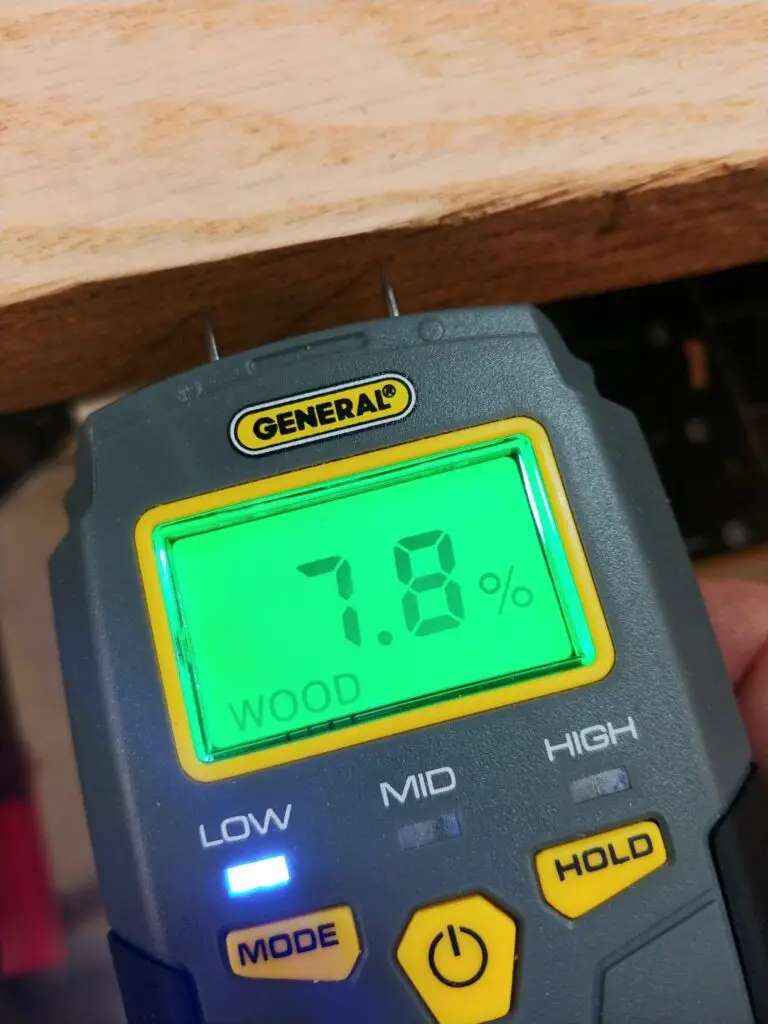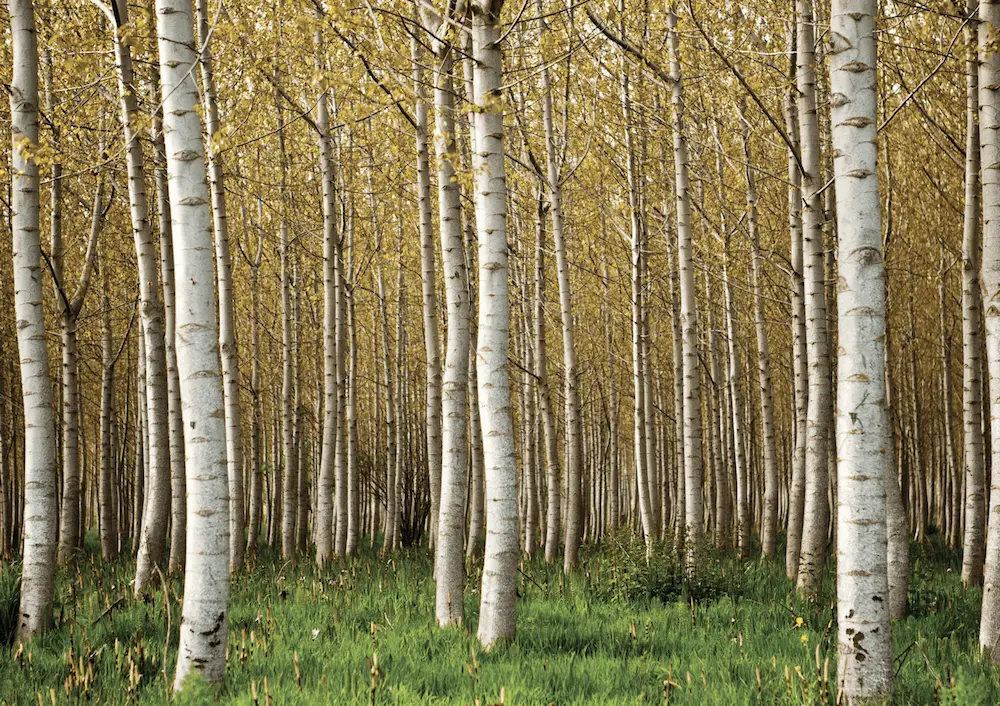Birch is good firewood without being excellent. It has moderate to high heat production but a higher sap content, generating more smoke.
One of its significant advantages is the faster seasoning time for hardwood which means you can burn the wood in the same year it is felled.
Table of Contents
Summary
- BTU: 20-26 million BTU/cord
- Weight: 4300 lb/cord green
- Seasoning Time: 6-12 months
- Splitting Difficulty: Moderate
- Sap Content: Moderate
- Smoke: Moderate
- Smell: Pleasant, Wintergreen
Overall, birch is good firewood without being excellent. It has a decent heat production and seasons quickly. The smell is pleasant, although I wouldn’t use it to smoke my food. If I had access to birch, I would happily add it to my winter firewood stockpile.
However, it does have its disadvantages, such as splitting difficulty and its susceptibility to rot. I have found that the wood fibers are very stringy, making it difficult to pull apart the logs after you think you have finished. Birch is also vulnerable to rotting, so make sure you spit the wood quickly after felling it and store it in a dry location, off the ground.

Heat Production
Birch has a moderate to high heat production depending on the particular species:
- Grey Birch: 20 million BTU/cord
- White Birch: 20 million BTU/cord
- Yellow Birch: 22 million BTU/cord
- Black Birch: 26 million BTU/cord
The logs can be on the small side because of the trunk’s diameter, so you may need to add more individual logs to the fire or add them more frequently. This heat production is sufficient for heating your home through winter, but you may need to store an additional cord if you are selecting from grey or white birch.
Smoke Production
Birch wood does have a moderately high sap content, which also converts into a higher smoke generation than some of the more popular hardwoods. This does reduce as the wood is seasoned, which thankfully doesn’t take long with birch. There is no excuse for burning green birch.
The smell of birch is pleasant without being outstanding and is generally not used for smoking meat.
Seasoning Time
Birch seasons relatively quickly for a hardwood and only takes 6 to 12 months. This timeframe depends on the species of birch, the location, and the weather. Black birch can be seasoned within six months, while yellow birch generally takes a full year.
Birch trees are slender, which makes the logs smaller as well. This helps to reduce the seasoning time. Birch also has a relatively high sap content, so I strongly recommend correctly seasoning the wood to minimize smoke generation. Ensure you get less than 20% moisture before considering burning the wood.
I personally recommend this General Tools Moisture Meter. It allows you to accurately gauge how wet your firewood is and whether it is sufficiently seasoned. Over time you can also see how quickly the moisture is dropping and how much longer you need to keep your firewood dropping until it is seasoned and ready to burn.
Press the sharp pins into the wood and you will quickly see the readout show the moisture ranging from 5% to 50%. It also has a Low/Mid/High indication depending on whether the wood is dry enough, so you don’t need to remember the actual values.

Burning Smell
Birch does produce a unique, pleasant smell that I have heard described as wintergreen. It is relatively subtle, but if you are burning unseasoned wood with a higher sap content, it can start to get overpowering.
I do not use birch for smoking meat unless I have run out of hickory, cherry, apple, or pecan.
A great tip if you don’t like the smell of a particular wood, especially a subtle smelling wood like birch, is to add a single log of a scent you like.
Creosote Buildup
Creosote is black soot that builds up in your chimney from any unburnt wood. This is particularly prevalent when burning green softwood, but it is present in all wood fires. Birch doesn’t produce significant amounts of creosote as long as it is adequately seasoned.
However, if it is burnt green, it can produce creosote because of its moderately high sap content.
I always recommend cleaning your chimney annually, regardless of the wood you burn, to eliminate the risk of chimney fires from creosote buildup completely.
Splitting
I would describe birch as moderately difficult to split because it can be stringy. You can think you have fully split through a log but struggle to pull the final fibers apart. This doesn’t seem like a big issue, but it can get very frustrating when it happens every single time over an extended period.
I have noticed that this is most prevalent the older the tree is. You will need to split the wood quickly after the tree has been felled to minimize any rotting that can occur with birch.
Different Types/Species
There are more than 60 different species of birch trees with their own unique characteristics. I have listed the four most common that you will find as a source for firewood – grey, yellow, white, and black.
Grey Birch
Grey birch is found in the North Eastern United States. Due to its lower heat production of only 20 compared to 26 black birch, it is used more extensively for landscaping and gardening than firewood. Grey birch also grows significantly shorter than the other options with reduces the yield per tree.
- Heat Production: 20 million BTU/cord
- Height: 20 to 30 feet
Yellow Birch
Also known as swamp birch, yellow birch is found in the Appalachian mountains. It has a moderate heat production but does have the highest sap content of any birch species. This also makes splitting it the most difficult – make sure you clean your axe thoroughly before storing it.
- Heat Production: 22 million BTU/cord
- Height: 60 to 75 feet
White Birch
White birch is one of the lowest BTU birch varieties, but it does light very quickly. This is a better alternative as kindling if you have to choose between multiple wood types. I also like the smell of white birch which is often described as ‘leathery.’
- Heat Production: 20 million BTU/cord
- Height: 40 to 50 feet
Black Birch
Black birch is prevalent throughout the Eastern United States. It has the highest heat production of any birch species and also has the sweetest smell of wintergreen.
- Heat Production: 26 million BTU/cord
- Height: 40 to 50 feet

Comparison to Other Woods
Here, I’ve taken some of the most popular firewoods to burn indoors and compared them to birch firewood.
Birch doesn’t rank in the top-tier firewood like maple or oak. This is because its higher sap content leads to more smoke and lower heat production. You will need to stockpile 25% more birch, especially the lower BTU species, than oak, to produce the same amount of heat.
Having said that, birch is widely available, and if it were the only option available, I would happily use it for my winter stores.
| Firewood | Million BTU/Cord (source) | Ease of Splitting | Coals | Overall Quality |
| Green Ash | 20 | Easy | Good | Excellent |
| Maple | 25 | Easy | Excellent | Excellent |
| Bur Oak | 26 | Easy | Good | Excellent |
| Birch | 20-26 | Moderate | Good | Good |
FAQs
Can you burn birch wood in a fire pit?
Birch is ideal for burning outdoors because of its high heat production, but it does have a moderate smoke generation which can be annoying. Birch seasons quickly, so you can prepare it much faster than the higher-quality hardwood species.
Can you burn birch wood in a wood stove?
Birch is not recommended for burning indoors because its higher sap content leads to smoke generation. If you intend to burn it in your home, make sure you have a glass screen installed and sufficient ventilation to avoid smoking out your entire house.
I would be happy to burn birch in my home if no oak or hickory wood was available.
How much does birch firewood cost to buy?
Birch firewood is widely available and costs between $300 and $400 per cord. This is relatively affordable compared to some of the higher-quality hardwood options available.
Final Thoughts
Birch is good firewood with moderate heat production and moderate smoke generation. It can be challenging to split because of its stringy fibers, but the trees grow thin and tall, so you don’t have to split wide diameter rounds.
I would happily add birch to my winter stockpile, but there are other hardwood options that I would pick first, such as maple and oak.
